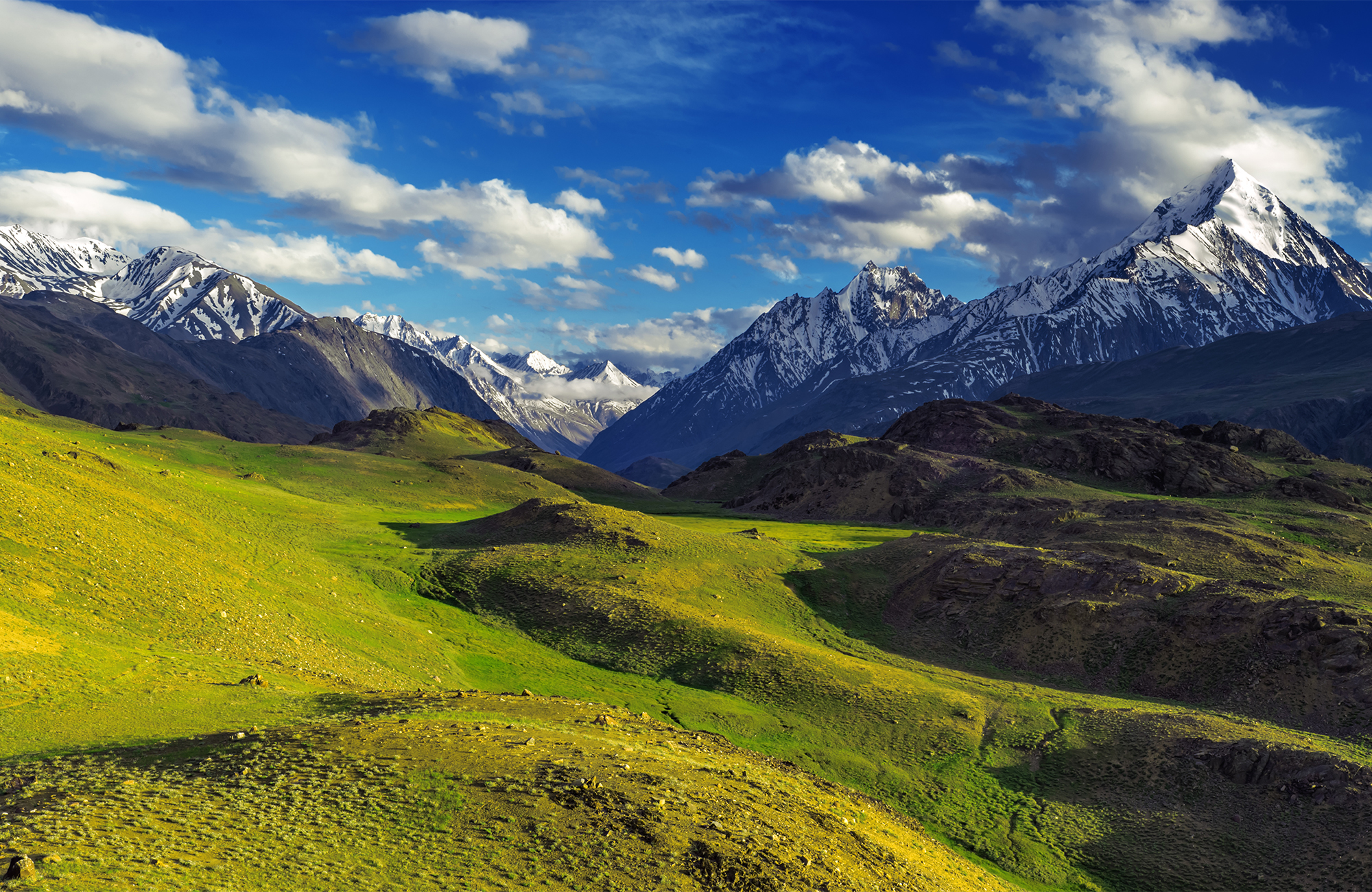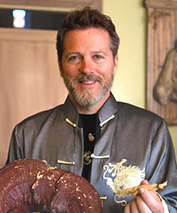





Shilajit (pronounced shee-lah-jeet) is a nutrient-dense humic resin derived from the high Himalayan Mountains of India and Nepal. It is famous throughout Indian history as a rasayana, a Sanskrit term for substances and herbs that enhance overall health, such as superfoods and adaptogens. Outside of the Indian and Nepali Himalayas, variations of shilajit are sourced from Mongolia as well as the Caucasus and Altai Mountains of Russia where it is called mumio, from Greek meaning “saving the body.” Native Americans used similar humic substances called Medicine Rock, sourced from the Grand Tetons of Wyoming.
Shilajit is a black or dark brown resinous material resembling tar that exudes from high rock strata in spring and summer. A significant portion of the makeup of shilajit is derived from long-term humification of plant and animal matter, possibly containing the condensation of entire ancient ecosystems, including plants and animals and their byproducts, along with microbial metabolites, lichen, and mineral extracts. Shilajit contains complexes of phenols, lignoids, sugars, lipids, amino acids, mineral oxides, and salts that have affected biochemical, microbial and enzymatic processes under conditions of geothermal pressure. Its resinous texture is from the breakdown of latexbearing plants, including Euphorbia Royleana.
Formation
Biochemically, shilajit is high in humic and fulvic acids, which are concentrated molecules that are food for other organisms. Humic acids are formed as the result of long-term breakdown of carbon matter from soil, rocks, plants, lichen, mosses, fungi, and animals. Humic matter is found in peat bogs, riverbeds, and layers of ancient soil strata mined from the ground. Humic acids are thought to contain a full spectrum of chemical components that varies with the environment. Composition of humic acids may include lattices that trap and preserve other organic compounds, which could explain why shilajit remains biologically catalytic for thousands of years.
Most humic materials from sources like peat bogs contain recent plant and animal detritus. Shilajit, having been entombed inside rock strata for millennia, is more concentrated than soil-derived humic substances, and true shilajit is only found in rock strata above 10,000 feet.
In the formation of this remarkable medicinal substance, we go back to when the Himalayas were an inland sea. As tectonic plates collided, the land rose, exposing the seabed with its rich collection of shells and marine ammonites. This exposed land subsequently became a tropical forest. By twenty million years BP (before present), the forests had produced rich and diverse soils. As the land rose into mountains, the seashells were fossilized by volcanic activity, and the forest biomass was enveloped in pockets of rock strata. When spring and summer temperatures cause rock expansion, the shilajit exudes out of cracks, where it is eaten by animals and collected by humans.
First Human use
Shilajit is said to have been discovered when Bhutanese jungle monkeys were observed climbing into the high crags of the Himalayas to eat the black substance seeping from the rocks. These monkeys were known for their cunning and swift agility. Human consumption ensued and shilajit came to be called “Conqueror of Mountains, Destroyer of Weakness,” due to the significant health benefits it apparently imbued. Princes, Sultans, Yogis, Sufis and the historical elite used shilajit daily to enhance their overall health. Many Indian mystics attribute their super-human powers to the strengthening effect of shilajit.
In addition to its use in Ayurveda, shilajit was the drug in ancient China called Wujinsan. In the ancient Western world, Aristotle even wrote of the health benefits of taking mumia, as did Paracelsus and Leonardo Da Vinci.
Possible influence in Hindu Mythology
The ancient Vedic writings ascribe a divine nature to shilajit; they state that Brahma (the Creator) created Vishnu (the Preserver) to reinstate Earth’s equilibrium during unstable periods. Brahma places Vishnu in the rocks, awaiting his time. When called, Vishnu perspires out of the rocks. Vishnu is often depicted with the black hue of shilajit and he sometimes holds a black seashell, possibly indicating that ancient people knew that seashells were involved in the unique formation of shilajit. Vishnu’s first incarnation was even in the form of Meen Avtar (a fish).
Another story involving shilajit is found in the sacred writings known as the Puranas, which states that Mahayana (known as the supreme God) lived in water and wished to rise out of it, so he became a boar and dug the bottom of the ocean into a mountain of dry land. He then imbued Vishnu in the rock, where varajeet (possibly meaning microorganisms) attacked him, and he sweated down the rocks to become a source of nutrients for other organisms.
Therapeutic analysis
Many humic components of shilajit are not scientifically understood and display different characteristics than other organic substances, hindering definitive examinations.
In an attempt to standardize shilajit, Dr. Shibnath Goshal analyzed samples collected from varying regions, including a variety from Antarctica. His research revealed the presence of the common component Dibenzo alpha Pyrone (DBP). This chromoprotein is traced to the orange and purple pigments in Pre-Cambrian sea mollusks. Fossilized sea shells were found in the rock strata at all source sites of Dr. Goshal’s samples, representing the one common denominator in all varieties. The presence of this phytochemical in shilajit determines its uniqueness from soil-based humic substances, and it is derived through tectonic pressure. DBP may represent a thread from early biology to currently living organisms; it is currently being studied for its immunomodulating and adaptogenic properties.
Ayurveda practitioners believe shilajit supports the overall balance of all three doshas (the three categories of energy of vata, pitta, and kapha). Used in excess, it does have a tendency to be heating, increasing the fiery pitta dosha. Ayurvedic writings describe shilajit’s ability to help treat a range of disorders including diabetes, anemia, ulcers, wound healing, bronchial asthma and other allergic conditions, hemorrhoids, enlargement of spleen, liver diseases, epilepsy, kidney support, gastro-intestinal infections, sexual dysfunction, prostate health, genito-urinary disorders, and geriatric problems.
Modern research has found an impressive broad spectrum of benefits. Some researchers claim that pure shilajit may contain balanced ratios of all elements found in nature as well as a vast profile of components that are beneficial for human health.
Quality concerns
Due to the fact that shilajit is rare and difficult to acquire, additives are sometimes used by processors, as shilajit is a mostly unregulated substance. Some additives could include soil-based humus, dirt, sawdust, mineral dusts, and resins. Many inferior shilajit products may even include traces of cow’s urine and animal feces. This underscores the importance of doing thorough research before buying or using a shilajit product. Research and standardization of shilajit has not completely determined which origins and varieties are pure and clean.
High-quality shilajit has been heated and filtered to remove rock and plant detritus. It can be purchased as a pure resin ~ there are good ones on the market, as well as some clever fakes. In Ayurveda it is traditionally powdered and mixed with triphala, which may buffer and balance its powerful energies.
As shilajit gains in popularity, demand could outweigh supply. Very little true shilajit is available to us, as the perimeters of its development are very narrow and precise. Those fortunate enough to attain some quality resin should use it sparingly as it is a very concentrated substance. For the triphala-blended powder, take half a teaspoon diluted in water, once or twice daily.
A few reputable American companies supply high-quality resin and powdered shilajit, but, as mentioned, thorough research is important to verify which supplier you trust. I advise contacting a company representative for detailed information on sourcing and production before buying any shilajit product. Ask them to supply a certificate of analysis (C0A) before purchasing.
Shilajit is a potent substance that can help imbue powerful health. It should be used with reverence and respect, and in moderation, so that more people can enjoy its broad-spectrum health benefits.
Shilajit has not been evaluated by the FDA, and this information is not intended to cure, diagnose or prevent disease.

Rehmannia is a Taoist Tonic Herbalist in the Gate of Life lineage, a 5000 year old herbal system from China. In 1998, he met Master herbalist Ron Teeguarden and became his personal apprentice until 2006, when he formed Shamanshack. Rehmannia studied Chinese medical diagnosis at Alhambra University, and obtained a degree from Natural healing College as "Master herbalist", but adheres to the title master Teeguarden gave him as "Superior herbalist." He is a pending member of the American herbalists Guild.
Rehmannia is adept in the 5000 year old healing discipline called the Gate of Life lineage, which utilizes "Tonic" herbs to maintain balanced health. He has written 5 books including Raw Chi, Healing Thresholds and The Hsien, and is near completion of an online course in Taoist health philosophy and Tonic herbalism in the Gate of Life lineage (www.GateofLife.org).
Rehmannia created all Shaman Shack products, and sources only the highest quality herbs. He is truly a front-runner in his field, and has taught and influenced many mendicants of Tonic herbalism.
Website: www.ShamanShackHerbs.com
Shaman Shack Herbs offers high quality 10:1 extracts of the Reishi fruiting body only.
